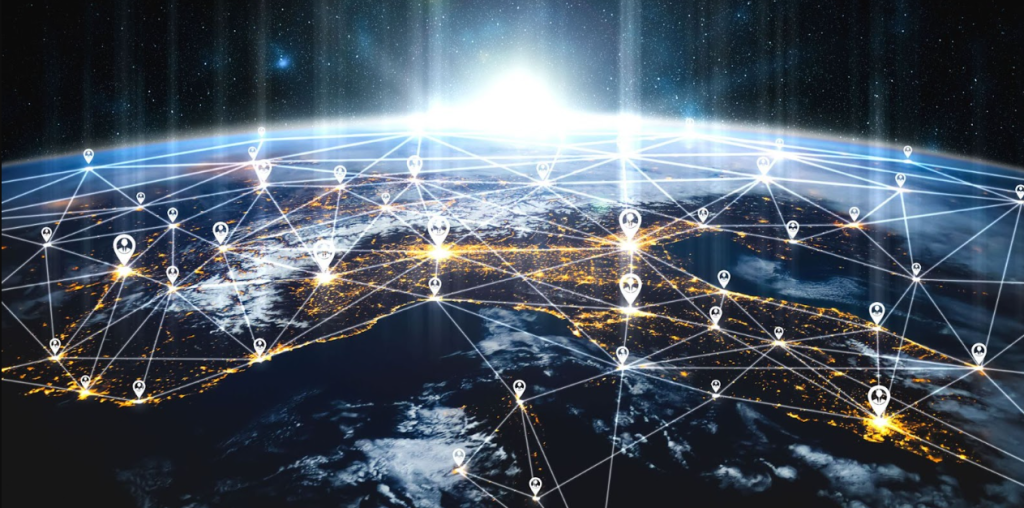Every day, I ask Google about the weather as I prepare my son for daycare. This quick routine helps me decide what he should wear and whether we need extra clothes or a jacket for our bike ride.
No matter how you check the day’s forecast, the source you’re using doesn’t directly measure or predict the weather. Instead, it shares information collected by those who do. The Internet plays a big part in spreading and communicating this data. It also assists meteorologists in gathering information from various sources, even remote sensors, to make weather predictions better.
Meteorologists often make mistakes in their forecasts, but it’s a tough job. They have to consider thousands of different things, including hundreds of factors they can’t control, to understand why it rained in one place but not in another. The ability to get such specific weather information is something we often overlook, but it’s quite amazing.
Just like we rely on the Internet for reliable and fast connections, measuring the Internet is important and tricky, just like predicting the weather and understanding climate patterns. That’s why we created the Internet Society Pulse. It’s a bit like your weather app, but it gives us a snapshot of the Internet’s health, availability, and how it’s changing.
The Internet doesn’t have country borders, but people want to know how it works in their own country. The Internet Society Pulse Country Reports help with this. They collect and explain information about the Internet in different areas all around the world, including every country, state, and region.
What Makes an Internet Healthy in a Country?
It’s tough to guess if a country’s Internet is healthy without looking at the data. Some may appear healthy due to fast and accessible service, but several factors are taken into account when checking the Internet’s health in a country. We divided these factors into three areas:
A free Internet lets people and groups use different technologies without needing approval and with few obstacles. Keeping an open Internet helps encourage new ideas and ensures it’s ready for future uses. An open Internet is one that anyone can easily access and use.
A worldwide connected Internet is for everyone. It lets networks and users link up without being limited by location. Expanding Internet connections makes it more useful for communication, learning, and business for everyone.
A safe Internet can defend against attacks on its structure, providing a strong service to its users. A reliable Internet meets the users’ expectations by offering a stable and dependable foundation for applications and services.
The Pulse Country Reports show data that Pulse collects from different public sources like APNIC Labs, Facebook, Google, ICANN, IIJ, ITU, Mozilla Firefox Telemetry, PeeringDB, and W3Techs. This data explains how healthy each country’s open Internet environment, worldwide connected infrastructure, and secure and trustworthy Internet are.

Why Measuring the Internet is Important
The ultimate goal in Internet measurement and operations is to predict issues or attacks before they occur. Network operators constantly monitor their network’s performance, allowing them to respond promptly and effectively to maintain customer satisfaction. Some Internet measurements focus on enhancing the understanding of Internet health at the network’s outer edges.
The Pulse Country Reports do not offer a detailed, localized view of this (at least not yet). Instead, they provide an overview of the overall health of all networks within each country. This broader perspective can be helpful in various ways:
- Policymakers and decision-makers can use the reports to identify areas of the Internet that require enhancement and develop supportive policies for improvements.
- Civil society groups and journalists can utilize the reports to advocate for increased investments and infrastructure and security improvements in regions with lower scores.
For instance, examining the Philippines’ country report reveals specific areas where decision-makers and advocates can focus their efforts to enhance the country’s Internet health and resilience. These areas include:
- Increasing the number of Internet users.
- Enhancing the country’s Internet resilience by improving infrastructure, performance, security, and market structures.
- Encouraging service providers to diversify their international routes and local peering, both of which are vital for strengthening the Internet’s reliability in the country.
- Urging content providers to secure the DNS supporting their websites.
In simple terms, the Pulse Country Reports offer a big-picture look at the Internet’s overall health. This helps guide decision-makers in recognizing issues and making choices. They can then confirm these concerns and make decisions to invest in policies and infrastructure improvements, ultimately benefiting both their own country’s Internet and the global Internet as a whole.








